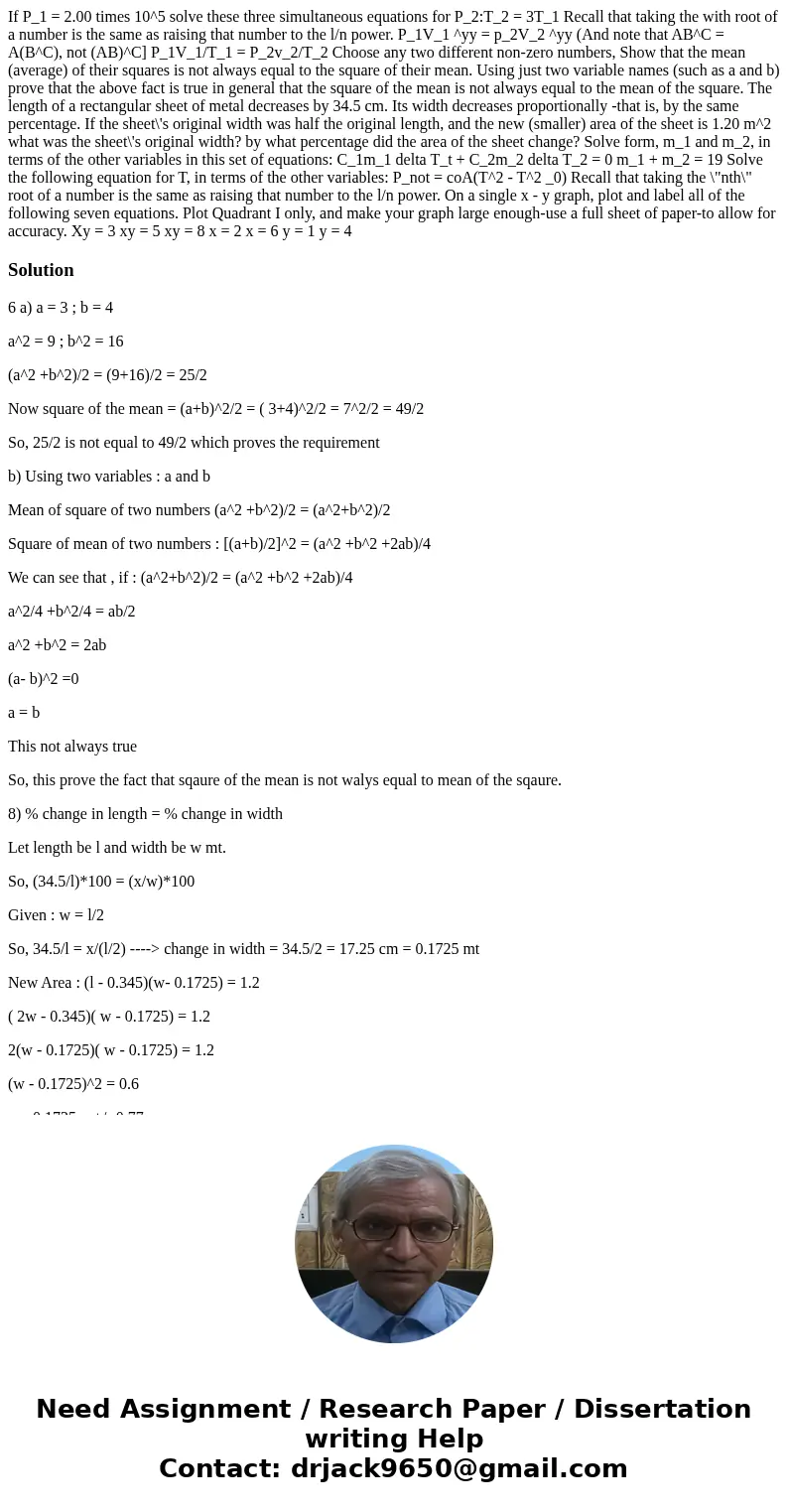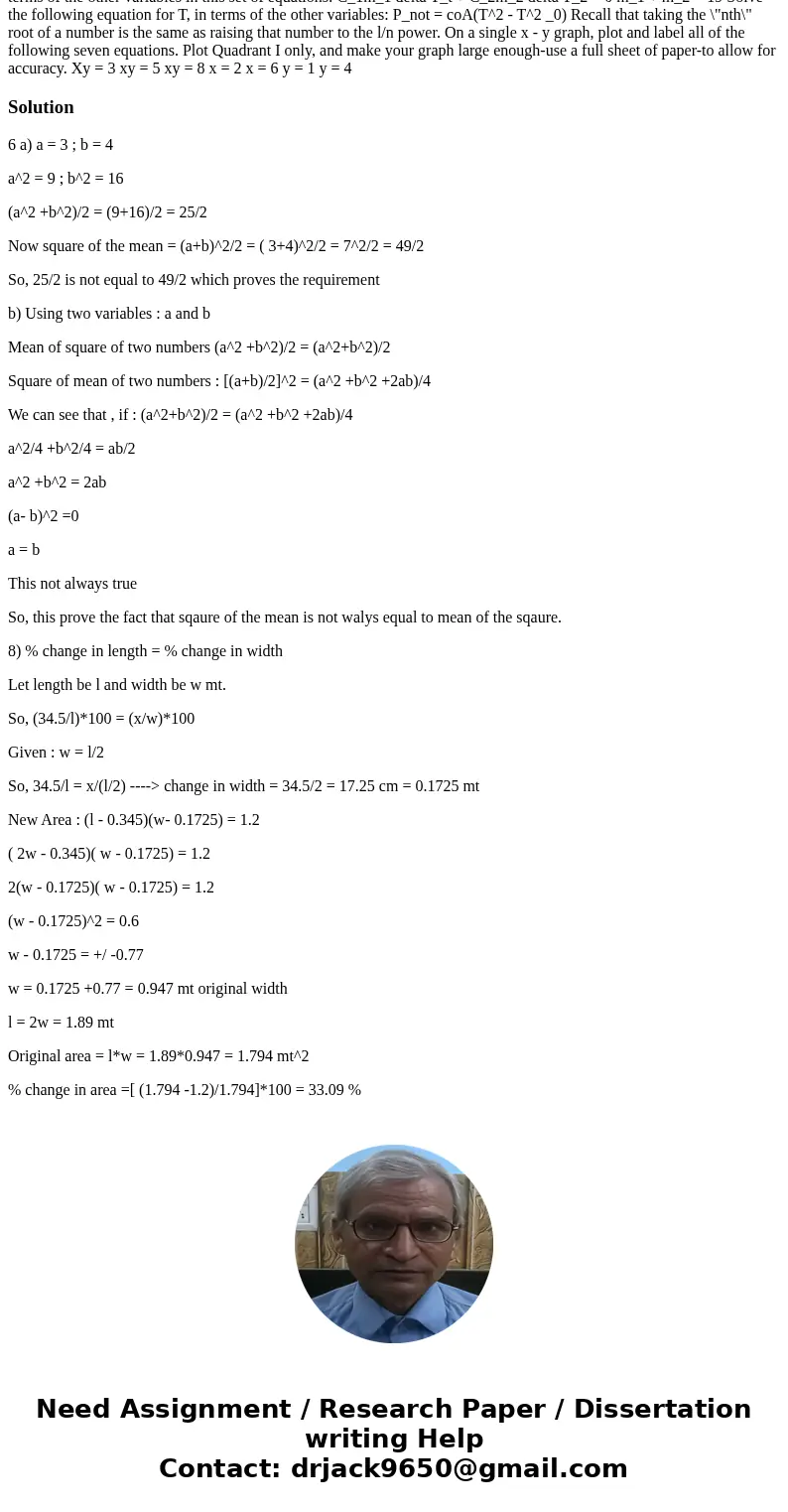If P_1 = 2.00 times 10^5 solve these three simultaneous equations for P_2:T_2 = 3T_1 Recall that taking the with root of a number is the same as raising that number to the l/n power. P_1V_1 ^yy = p_2V_2 ^yy (And note that AB^C = A(B^C), not (AB)^C] P_1V_1/T_1 = P_2v_2/T_2 Choose any two different non-zero numbers, Show that the mean (average) of their squares is not always equal to the square of their mean. Using just two variable names (such as a and b) prove that the above fact is true in general that the square of the mean is not always equal to the mean of the square. The length of a rectangular sheet of metal decreases by 34.5 cm. Its width decreases proportionally -that is, by the same percentage. If the sheet\'s original width was half the original length, and the new (smaller) area of the sheet is 1.20 m^2 what was the sheet\'s original width? by what percentage did the area of the sheet change? Solve form, m_1 and m_2, in terms of the other variables in this set of equations: C_1m_1 delta T_t + C_2m_2 delta T_2 = 0 m_1 + m_2 = 19 Solve the following equation for T, in terms of the other variables: P_not = coA(T^2 - T^2 _0) Recall that taking the \"nth\" root of a number is the same as raising that number to the l/n power. On a single x - y graph, plot and label all of the following seven equations. Plot Quadrant I only, and make your graph large enough-use a full sheet of paper-to allow for accuracy. Xy = 3 xy = 5 xy = 8 x = 2 x = 6 y = 1 y = 4
6 a) a = 3 ; b = 4
a^2 = 9 ; b^2 = 16
(a^2 +b^2)/2 = (9+16)/2 = 25/2
Now square of the mean = (a+b)^2/2 = ( 3+4)^2/2 = 7^2/2 = 49/2
So, 25/2 is not equal to 49/2 which proves the requirement
b) Using two variables : a and b
Mean of square of two numbers (a^2 +b^2)/2 = (a^2+b^2)/2
Square of mean of two numbers : [(a+b)/2]^2 = (a^2 +b^2 +2ab)/4
We can see that , if : (a^2+b^2)/2 = (a^2 +b^2 +2ab)/4
a^2/4 +b^2/4 = ab/2
a^2 +b^2 = 2ab
(a- b)^2 =0
a = b
This not always true
So, this prove the fact that sqaure of the mean is not walys equal to mean of the sqaure.
8) % change in length = % change in width
Let length be l and width be w mt.
So, (34.5/l)*100 = (x/w)*100
Given : w = l/2
So, 34.5/l = x/(l/2) ----> change in width = 34.5/2 = 17.25 cm = 0.1725 mt
New Area : (l - 0.345)(w- 0.1725) = 1.2
( 2w - 0.345)( w - 0.1725) = 1.2
2(w - 0.1725)( w - 0.1725) = 1.2
(w - 0.1725)^2 = 0.6
w - 0.1725 = +/ -0.77
w = 0.1725 +0.77 = 0.947 mt original width
l = 2w = 1.89 mt
Original area = l*w = 1.89*0.947 = 1.794 mt^2
% change in area =[ (1.794 -1.2)/1.794]*100 = 33.09 %


 Homework Sourse
Homework Sourse